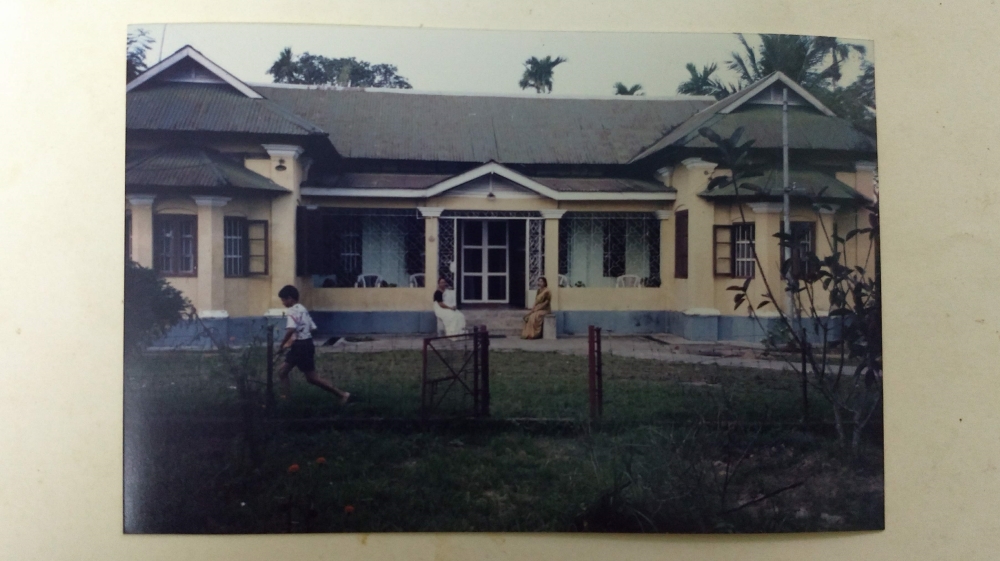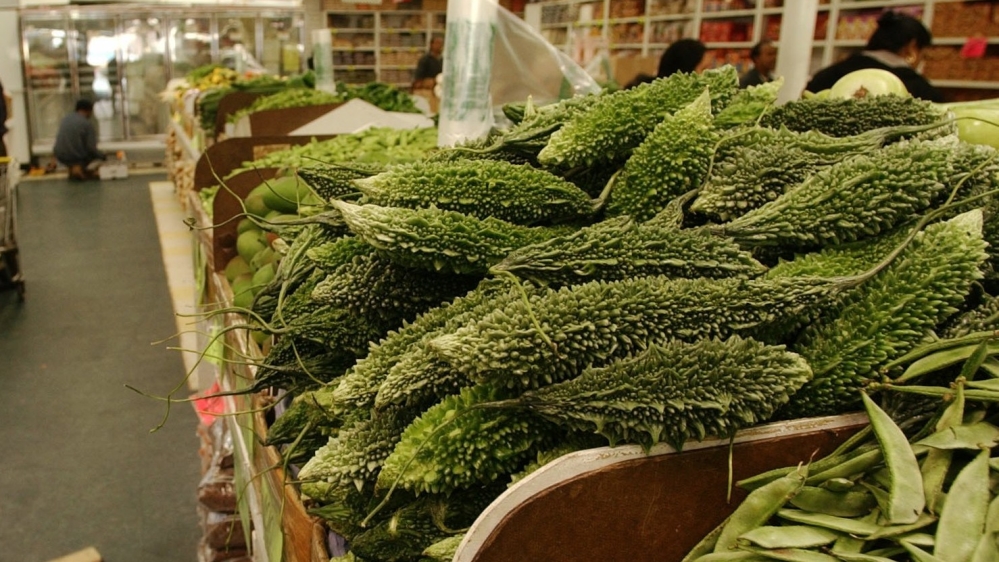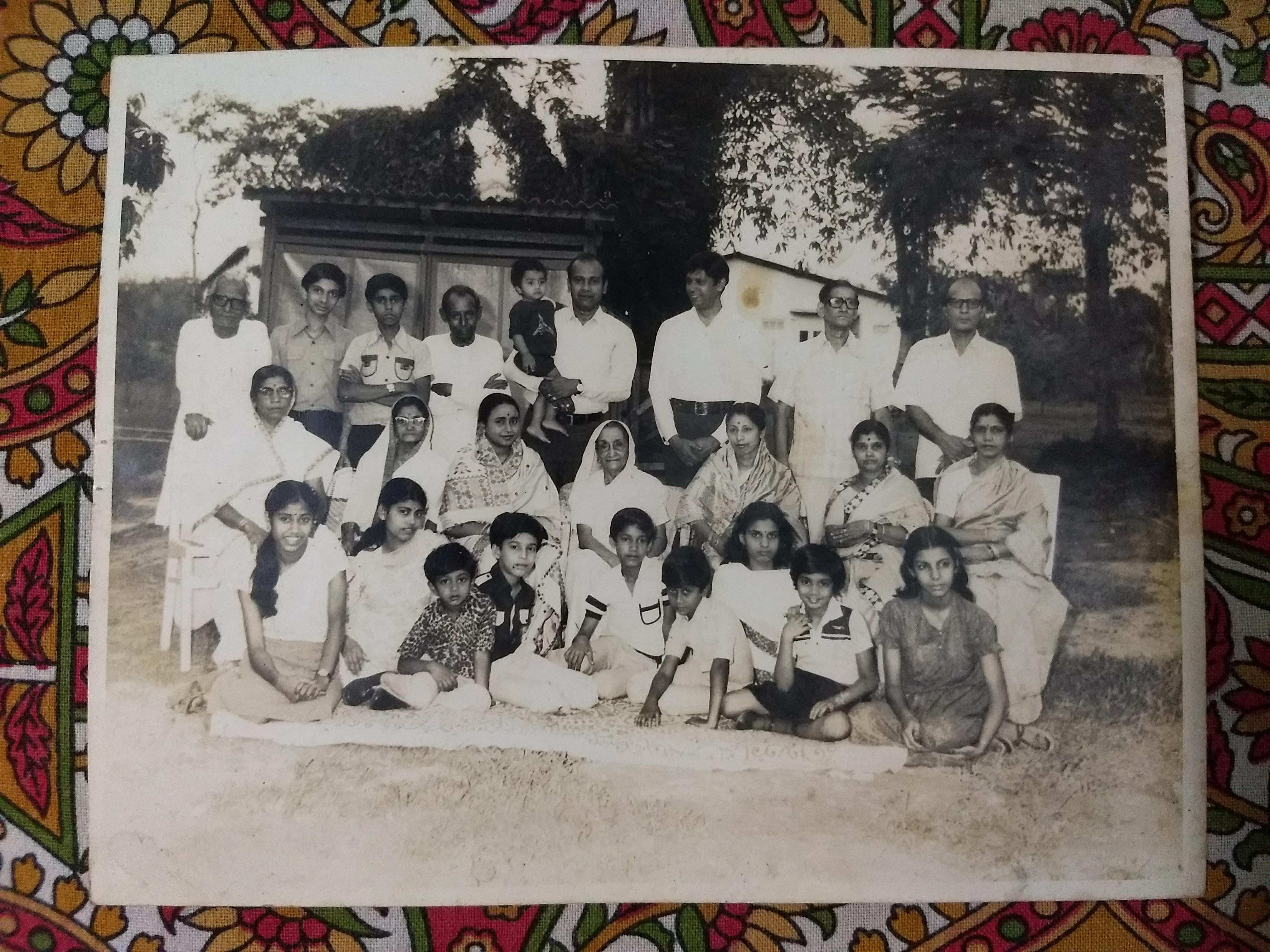Goya love: From India to Japan, a bitter gourd and taste of home
Karela is the crocodile-skinned vegetable nemesis of Indian children, but for one writer it has come to symbolise home.

By the time I was 14, my family was visiting Jorhat annually during summer breaks – taking a 33-hour train ride from Bombay to Calcutta, then an overnight stay at the Broadway Hotel on Calcutta’s Esplanade Street, followed by an Indian Airlines flight at noon to Assam’s capital, Guwahati, 20 days at my mother’s family home in Guwahati, and finally an eight-hour bus ride from Guwahati to Jorhat which included a 30-minute lunch break at the same highway restaurant in Nagaon, always.
As I look back on these trips during the early 1990s, I understand that they were to connect with my family’s roots in Assam in India’s northeast, a region so far from the country’s megapolis Bombay (now Mumbai) that there was no direct flight back then; flying westward to Dubai was cheaper and takes less time even today.
Keep reading
list of 4 itemsThe legendary flavoured ground salt from India: Pisyu loon
Nearly 55 million face hunger in West and Central Africa, UN warns
Revisiting molokhia amid war and displacement in Gaza
In Bombay, I was the only Assamese girl in my school until I was 15; my brother was the only Assamese boy at his school. Both of us proudly proclaimed ourselves as Assamese, and our parents took pride in teaching us the Assamese script during shorter Diwali holidays. We would write three-sentence letters to our older relatives in Assam; during summer holidays in Assam, my brother and I would try to read signage.

A gourd with crocodile’s skin
During one of the trips to Jorhat – definitely before I turned 10, because habits needed to be instilled early – Khura presided over the dining table in an authoritative way, unlike at any other meal. Even though Khura is my father’s younger brother, he commanded authority in that massive nearly-century-old house that has been witness to several births, marriages and deaths. Over the years, he had become the gentle patriarch of the family, whose opinion was sought on all matters, even by his married older sisters and their children.
Khura was the one who took my mother to the hospital when she was in labour. Khuri, the wife of my father’s younger brother, was the first person in my family to hold me after I emerged from a liquid world into this one. So it was obvious that certain habits would be instilled in me, in my birth home in Jorhat, by Khura. His one stare was enough that particular day: somehow the fried karela finally made its way down into my intestine. I may have seen a devilish smile on my mother’s face. I think I was too scared of the consequences if I threw up.

Karela (bitter gourd) is the nemesis of Indian children. Shaped like a long mouse, the gourd has rough ridges that resemble a crocodile’s skin (I remember this resemblance when I went to the zoo and saw that giant amphibian napping under the sun, half its body submerged in an artificial swamp). Laterally cut, if someone were to dip the karela in watercolour and then stamp it on a paper, the image would be of a flower with a large visible pistil, and small petals of different lengths and widths. But we could not use karela for art: we had to eat it, compulsorily. And kids dreaded karela.
For, karela is bitter, perhaps the most bitter taste that my child’s tongue had encountered. My parents had been trying to get me to eat it: “It’s good for your stomach since you anyway suffer from constipation.” But the fussy eater that I was, I did not budge. (My younger brother, not a fussy eater by any measure, does not eat it even today). So my mother realised that I had to undergo a rite-of-passage in Jorhat, as the daughter of the Borpujari family. And that is how, Khura, once again, went for his post-lunch siesta following the triumph of having introduced karela to yet another scared and grumpy kid.
And I am glad for that fear of retribution (no chocolates) if I did not eat my karela during the rest of that summer holiday. Because it instilled in me, eventually, an ardent love for karela.

Comforting blanket
Sliced about a centimetre thick (and every karela yields, I guess, about 20 slices), Assamese homes throw them into a wok of hot mustard oil. Chillies are added sometimes, but turmeric and salt are added always. The lid might go on but eventually, and what comes onto the plate are deep-fried karela slices, some of them fried until almost burned and crispy.
Since Assamese households often have more than one dish to go along with the staple of rice – one bowl of lentils, and two vegetables, and fish, obviously, because of the mighty Brahmaputra river flowing through and across Assam – fried karela is the first to be eaten with the rice. The oil gives just enough viscosity for the two to be eaten together. On days when I would return from work late and soaked in Bombay’s monsoon rain, karela fry, daal (lentils) and hot rice aplenty became an unusual comforting blanket.

Over the years, I have travelled and lived in various countries, and have eaten various vegetables that I had never seen in India while growing up: Brussels sprouts, avocado, prunes, maple syrup and more. I was raised in an India where only domestically-grown fruits and vegetables were consumed. In fact, my platter in Bombay was very different from that in Assam during the holidays: the vast distance between the two places meant a vast difference in the flora and fauna. My Assamese cousins visiting us in Bombay could not stand the taste of sea fish; friends visiting us in Bombay could not fathom the taste of the river fish that one particular vendor at the local fish market would sell to Papa. Travelling abroad over extended months, I have missed karela fry; I have missed the atypical ways that both sea fish (mackerel) and river fish (carp) are cooked in Bombay and Assam, respectively.
Mocking meals
In recent years, Western foods have appeared in the Indian market, obviously at a high price. At the same time, supermarkets in the West have long stocked up on “Indian Curry Masala”, an idea that feels simply wrong.
Curry can be best described as sauce, and there is not one type of sauce. How could there be just one Indian curry, when India is geographically as large as Europe? Do we consider one type of pasta sauce to be the sauce eaten with every dish across Europe? When people in the West proclaim to me, “I love curry,” what I hear is, “I love food.”
As an Assamese raised in Bombay, my mother cooked several types of Assamese curries, each with a distinct texture and a name rendering that identity for it. As a resident of Bombay, I was exposed to foods of other parts of India – our neighbours and my family were almost always sharing food – and they too had different names for their curries. We would mock the twisted names of their curries; they would mock ours. Maybe we were doing to each others’ meals what the West does to “Indian curry”?

In a foreign land
One evening in Tokyo in October 2019, a month after I had arrived in Japan, I found myself at Gyomu Super market. I was told that it stocked foreign foods. I reckoned a trip through a food market with ingredients I recognised would soothe the discomfort I felt as a gaijin (foreigner); an identity I was confronted with repeatedly, albeit politely, as I tried to make sense of the endless rules that seemed to govern every institution.
Walking through the vegetable section and adding ginger, potatoes, onions and tomatoes to my shopping basket, I was converting the Japanese yen to Indian rupee on a phone app. And then suddenly, I saw the vegetable that took me back to summer holidays in Jorhat with Khura glaring at me, and Bombay dinners with my family.

I had travelled to more than 20 countries and never before found it, but here it was in Japan.
I looked around, then picked up the karela and sniffed it instinctively before smiling at my own stupidity: it has no strong scent.
The currency converter on my phone told me that it was too expensive. But seeing karela that day in a foreign land where I had finally set up a home after many years on the road assured me that I could recreate familiar and familial memories there.
But how could I explain my karela to Japanese ears – when they are already familiar with it? And how would I call this comforting vegetable by its new name, in a new land?
Goya.